‘Do people have to die?’ Why these Californians fear catastrophic floods
Amid record snowmelt, residents wonder what it will take for officials to address problematic infrastructure in San Joaquin Valley towns, writes Brianna Sacks
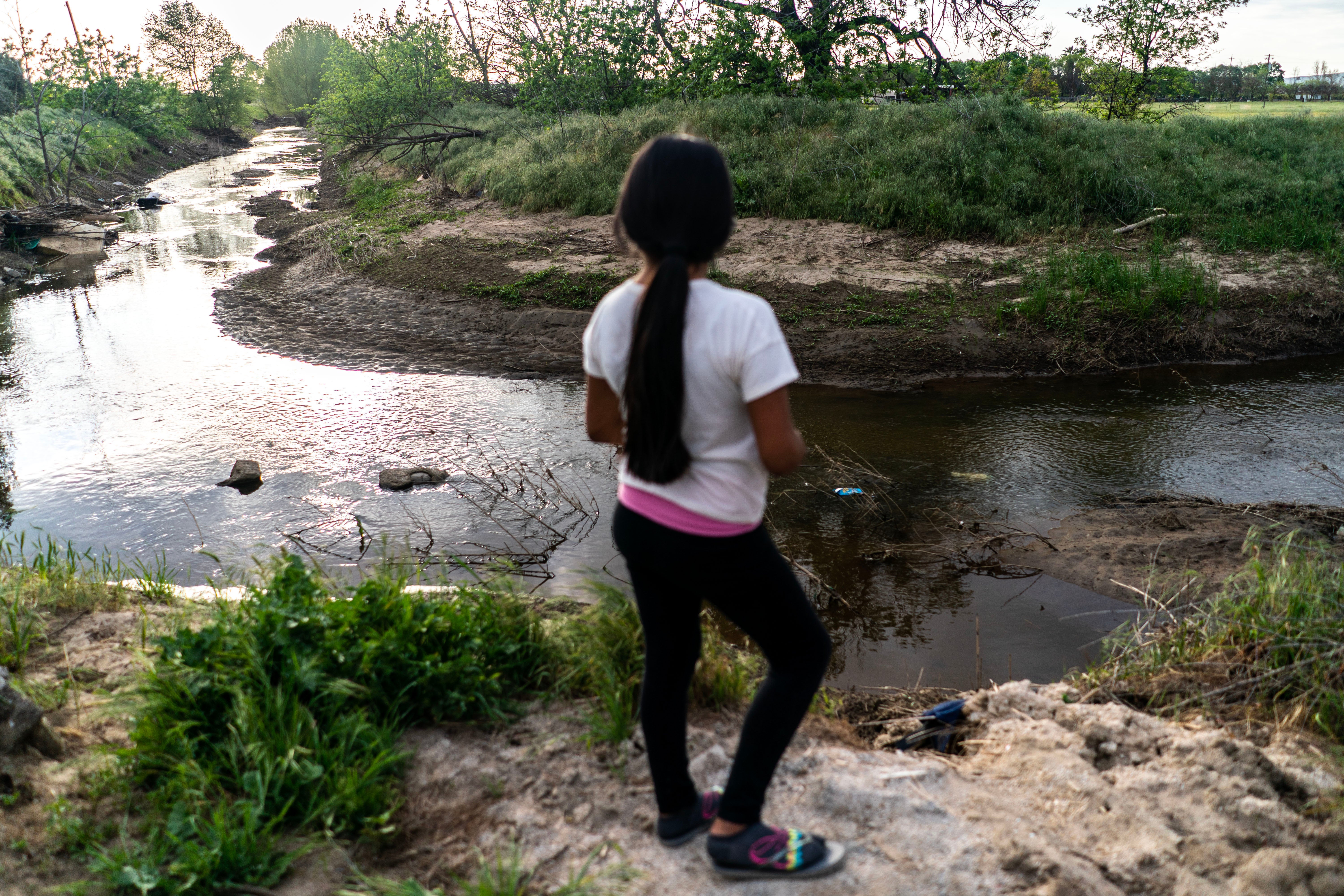
Jayden Martinez walks across the cracked mud of the canal that flooded his family’s home last month, his Pokemon-themed Crocs crunching on pieces of concrete and rocks. Standing on the bank, the nine-year-old looks at the channel, which is partially clogged with rubbish, and recounts how the surging water broke through, turning his street into a river and leaving his family and neighbours with 10 minutes to grab what they could and get out.
Jayden, his mother Juanita Martinez, and dozens of other residents in this central California farming town are trying to rebound from a flood brought on by relentless rains, a shock after enduring years of extreme drought. Now, as wet mattresses and furniture still dry out in front yards, some residents who live along the canal, including the Martinez family, have no idea that immense amounts of water might disrupt their lives again.
In the coming weeks and months, Cutler, located about three hours north of Los Angeles in Tulare County, and other towns in the San Joaquin Valley are facing the prospect of catastrophic flooding from what could be the largest quantity of snowmelt in state history – and much of the area’s flood infrastructure is in dire need of repair, according to residents.
After a parade of atmospheric rivers deluged the state this winter, Cutler’s ageing Sand Creek breached in several places, turning streets into rivers and damaging about 130 homes. While the flooding was a surprise, it was not unprecedented or unpredictable for the valley floor, experts say. The canal, as well as other parts of the area’s flood and irrigation management systems, was already eroding and poorly managed, largely because of the state’s decades-long extreme drought, experts and residents say.
“We haven’t seen anyone coming here,” Martinez says, gesturing towards the haphazardly patched canal. “We lost a lot of memories, stuff we were going to pass on to our children. What has to happen? Do people have to die for something to be done about it?”
The dilapidated infrastructure may now be put to a test unlike any in decades: as the days warm, the melting snow will send billions of gallons of water coursing through San Joaquin Valley’s already saturated waterways and levees. Parts of the region are already at risk, not just from snowmelt but from full reservoirs; officials declared a flood warning this week for Tulare and two surrounding counties because of dam releases.
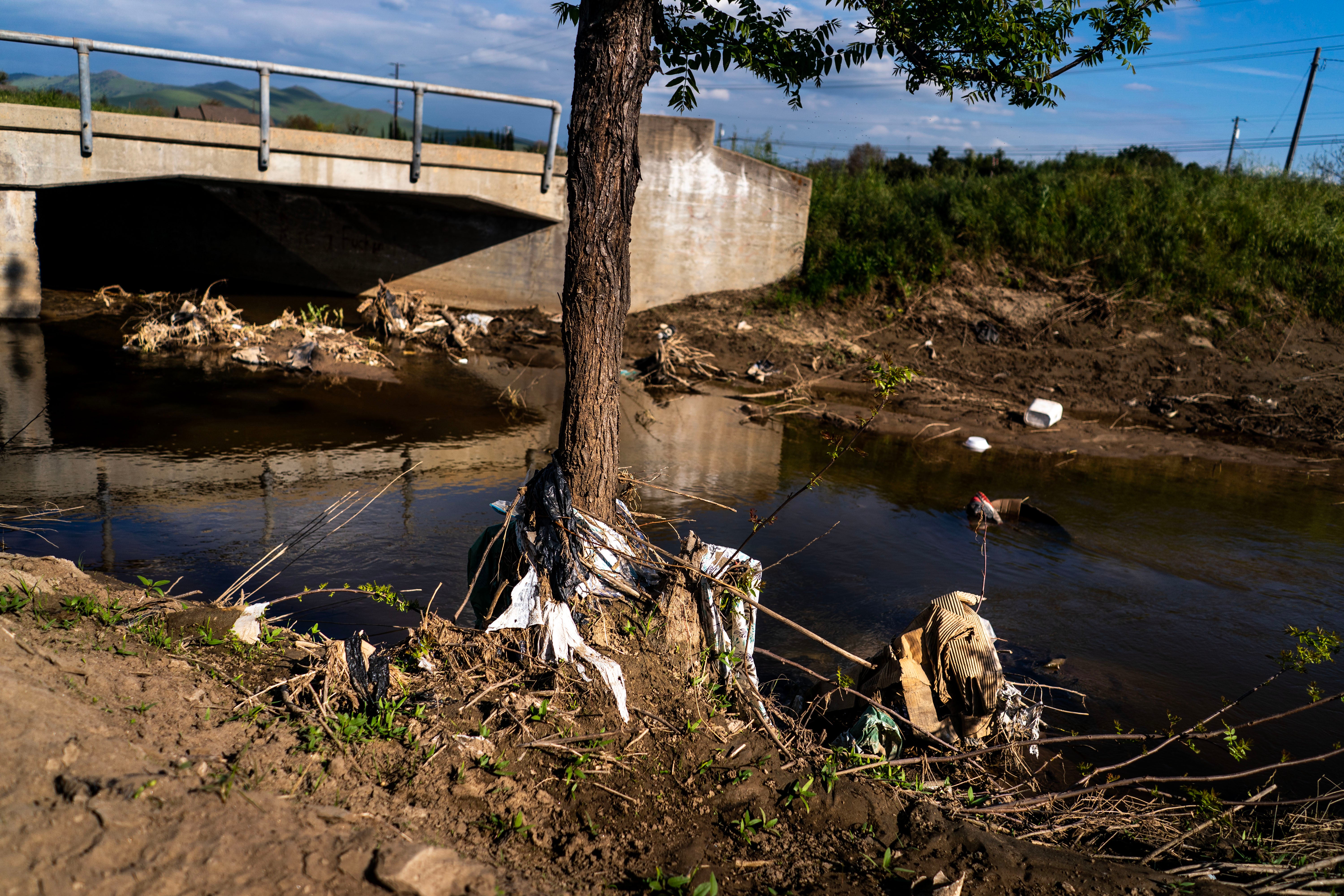
Still, Juanita Martinez and other residents say that no one seems to be taking ownership of the problematic infrastructure, with different agencies lobbing blame and responsibility at one another and not responding to flood victims. This kind of finger-pointing has been playing out across other San Joaquin Valley towns, as politicians and big agricultural companies clash over where to put floodwater.
Tulare County has long been the centre of California’s compounding water crises. For decades, there was barely enough to survive. Now, there is so much, people’s livelihoods are threatened.
The area does not have enough surface water to support its massive agriculture output, which has consequently contaminated the water throughout the area with nitrates. Martinez, who grew up in Cutler, can’t remember the last time she drank from a tap. Containers of bottled water are stacked up everywhere, a cost that experts say underscores the area’s stark environmental inequities.
Years of unrelenting drought have also diverted much of officials’ attention and resources away from flood management, water experts say, despite years of warnings that the low-lying valley was sinking itself further into risk with groundwater-pumping and disinvestment. And even though rain swells and snow melts have flooded portions of the valley every few decades, more and more towns like Cutler have popped up in flood-prone regions so that workers could be close to the ever-expanding fields.
Ninety-nine per cent of Cutler’s residents are Hispanic, and more than a quarter live in poverty, according to US census data. These small, primarily Latino communities with little political clout have seen far less investment and resources than the land on which their residents work, according to experts and advocacy groups. This winter’s historic storms, and the slow-moving flooding disaster they have created, have sharply exposed those who have fallen through the cracks. As the climate continues to warm and fuel greater weather extremes, experts say this will keep happening.
“Our communities are on the frontlines of California’s climate crisis,” says Susana De Anda, the executive director of the Community Water Center. “Small, rural farmworker communities have faced the brutal reality of losing access to running water during the drought, and now are at risk of flooding with little recourse.”
A big part of the problem is that it is unclear who is responsible for which aspects of the water infrastructure, which has a ripple effect on everything downstream.
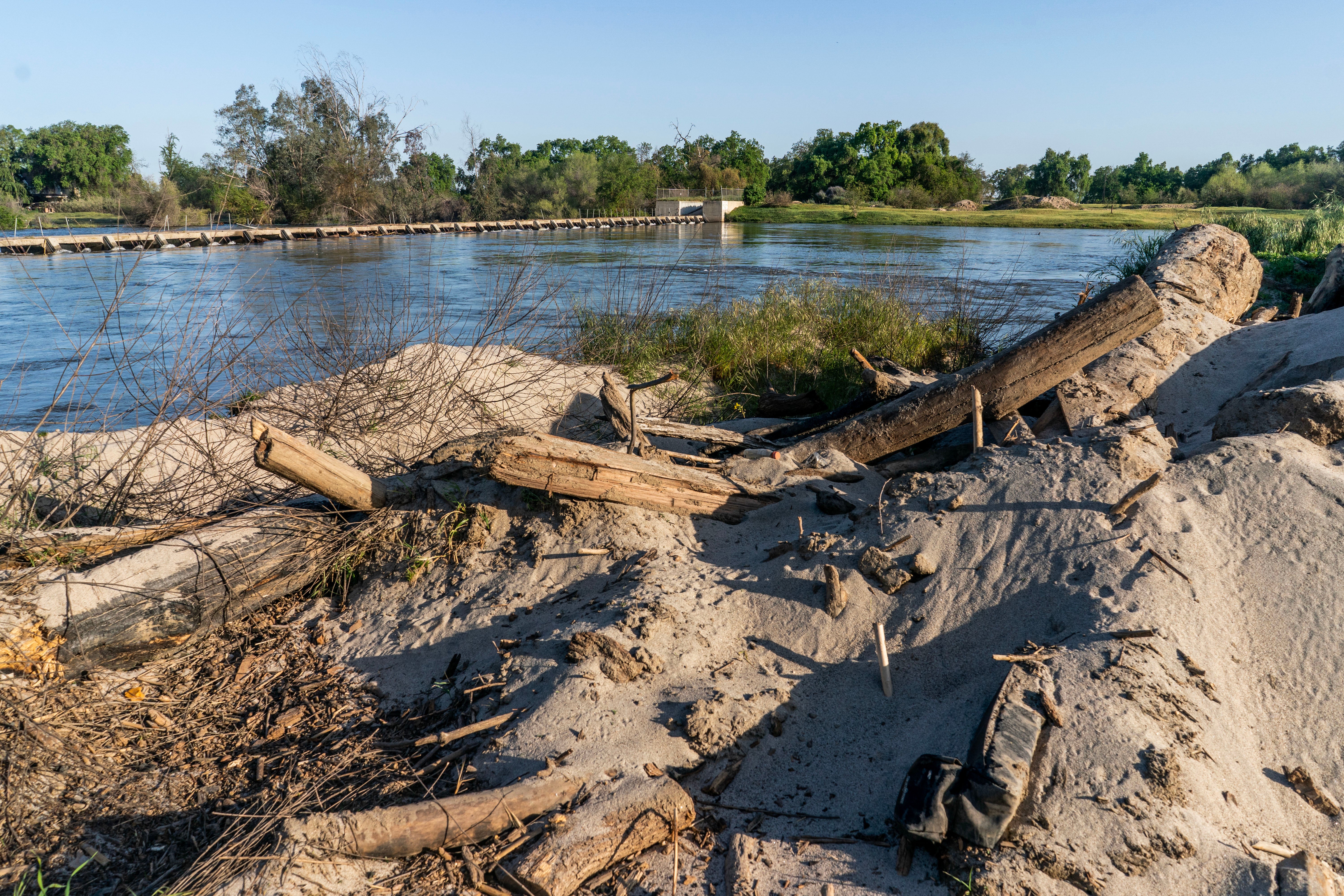
Tulare County’s Flood Control Master Plan, created in 1971, is still the county’s most comprehensive guideline, and outlines in great detail which areas are at risk and why. It states that “flooding conditions in the Tulare-Fresno unit are influenced significantly by the canal system of Alta Irrigation District.” The Alta Irrigation District oversees hundreds of miles of ditches and canals, which help transport “large quantities of water from Kings, San Joaquin and Kaweah rivers” and cross many streams.
One of those is Sand Creek, the channel that flooded Martinez’s home, which is part of a public housing complex. The plan says the creek is a “major contributor to flooding”. And “since significant rain storms may occur on relatively short notice from about 1 November to about 1 April”, the plan explains, procedures should be established to perform flood control functions at any point during that time frame.
But Alta Irrigation District, which still controls the canals and collects fees from landowners, is adamant that it is not responsible for the creek, calling it a “fresh water source”, and that the county is in charge of flood management.
Tulare County supervisor Eddie Valero, who grew up in the area and remembers the dilapidated infrastructure, disagrees. When the rains hit, they had “to do with what they had” and construct a makeshift canal, he says. The debris and rubbish made it worse by constricting the canal.
In a state that often forgets its rains can be just as harmful as its drought, creating new flood management strategies can often take decades of planning, conversations and management, says Julie Rentner, president of River Partners, which helps restore natural habitats and flood plains. And while progress has been made and there are projects in the works, these can be tough for communities to take on, she says.
Tulare County’s chief engineer, Ross Miller, who oversees the county’s Flood Control District, says the authority manages “portions” of Sand Creek and has performed maintenance in the channel in Cutler in recent months. While the district is charged with “managing and controlling storm waters”, he says, it “does not have exclusive power to do so and is also charged with cooperating with the state, federal government, cities, other special districts and other entities for projects”.
Miller does not believe Cutler will flood this summer, since historically snowmelt has not overwhelmed the creek that snakes around it. The county is also working with local, state and federal agencies to bolster and patch up vulnerable flood infrastructure and plan for the summer, he says.
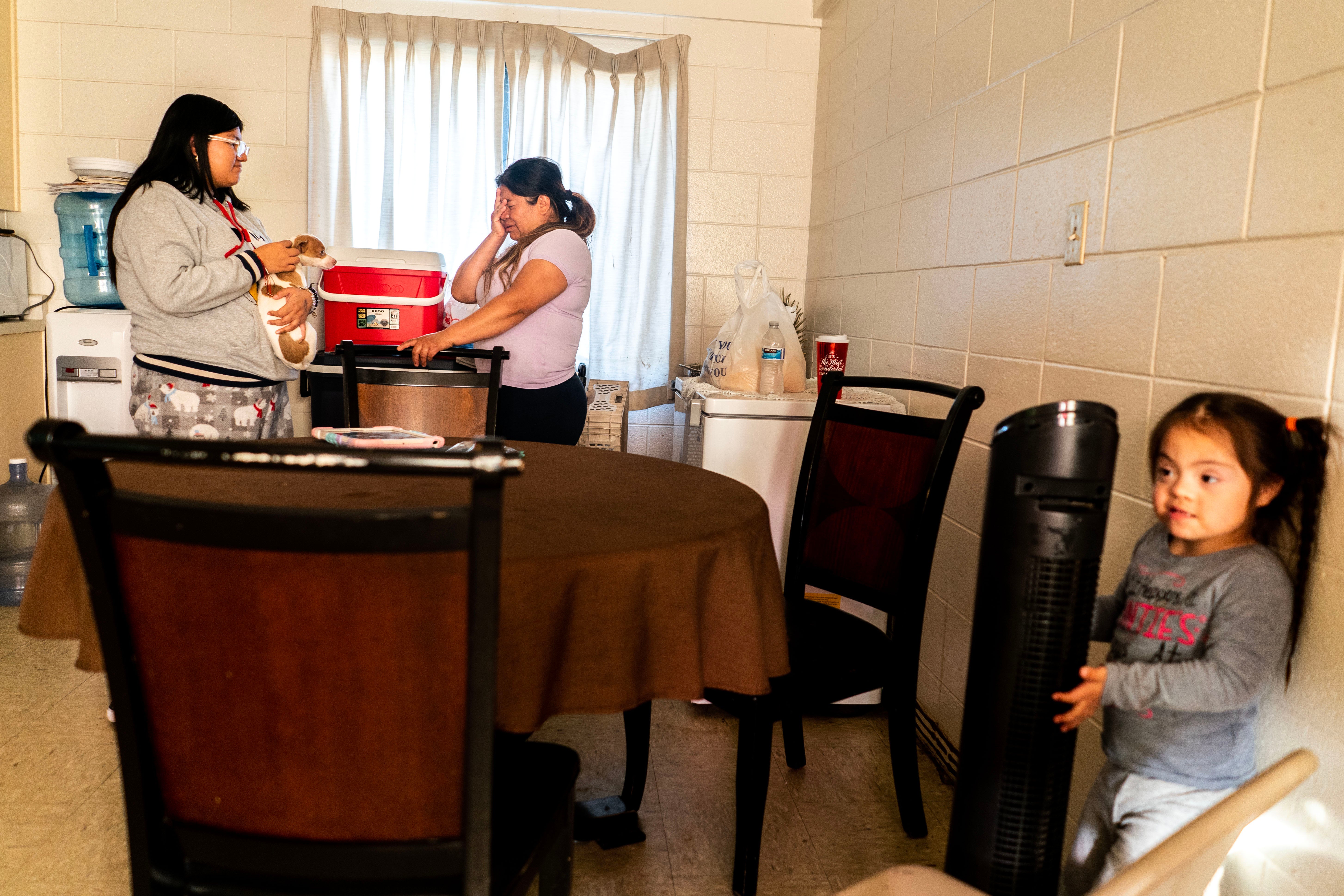
But experts say that’s difficult to predict. Where and how badly communities will flood largely depends on how hot it gets and how fast, meteorologists say.
“Water goes where it wants to go, and it finds our weaknesses,” explains Jeffrey Mount, a senior fellow at the Public Policy Institute of California’s Water Policy Center. “Especially in bad design, bad planning and bad maintenance. This is another example of small-town America’s experience with water infrastructure issues. It’s tough-going for these folks. They are absolutely stuck.”
Maria Perez found out that water might ruin her life again while picking oranges. Perez’s boss informed her, and other farmworkers, that the melting snow might not fit into the surrounding reservoirs and could threaten the land and their jobs. A single mother of four, whose five-year-old daughter has Down’s syndrome, the 41-year-old panicked.
“I am not prepared,” she says from her dining room table. “I have already lost everything.”
Perez lives in a subsidised apartment a few doors down from Martinez. She and her children are still cleaning out the muck from March’s flood with a mop and a broom, trying to ignore the mould that’s crept onto their ceilings and around the bathroom. Her car smells damp and musty. She had to throw out her living room furniture and is trying to salvage her kids’ school clothes because she can’t afford new ones.
Feeding a family of five on a farmworker’s salary is already tough. Having to rent a room for a few nights, buy cleaning supplies, and pay rent and bills for an apartment she didn’t live in for a month has made things much worse, and made her feel even more alone.
Perez says she has not gotten any help, or rent and expense reimbursement, from the Tulare Housing Authority, which did not return requests for comment. Nor has she seen any major meaningful work being done to protect the creek that runs across the street from her home. She has no idea whose job it is, and she is used to it being dirty and overgrown.
“We feel neglected here because we are,” she says.
Last Thursday, Perez, Martinez and others had planned to show up at an Alta Irrigation District meeting to demand accountability and action in respect of the deteriorating, dirty canals. But when they arrived that morning at the small stone building in the neighbouring town of Dinuba, a clerk told them not to bother – the county, not the district, was responsible for flood management. There was no reason for them to be there, she said, and no one could help them. Defeated, the women left. They had to go to work.
But inside the wood-panelled room, where the all-white, mostly male board sat around a table to discuss what was happening across the district’s 129,000 acres, a handful of frustrated farmers had the same questions: “What is taking so long to repair the breaches?” “Why aren’t you guys maintaining the infrastructure that we pay for?” “Why are the canals full of trash?”
“We had a whole year without any water. That’s a lot of time to make repairs,” Jeff Noorigian, whose family farms almonds, grapes and peaches, said to the board. “It looks like a landfill.”
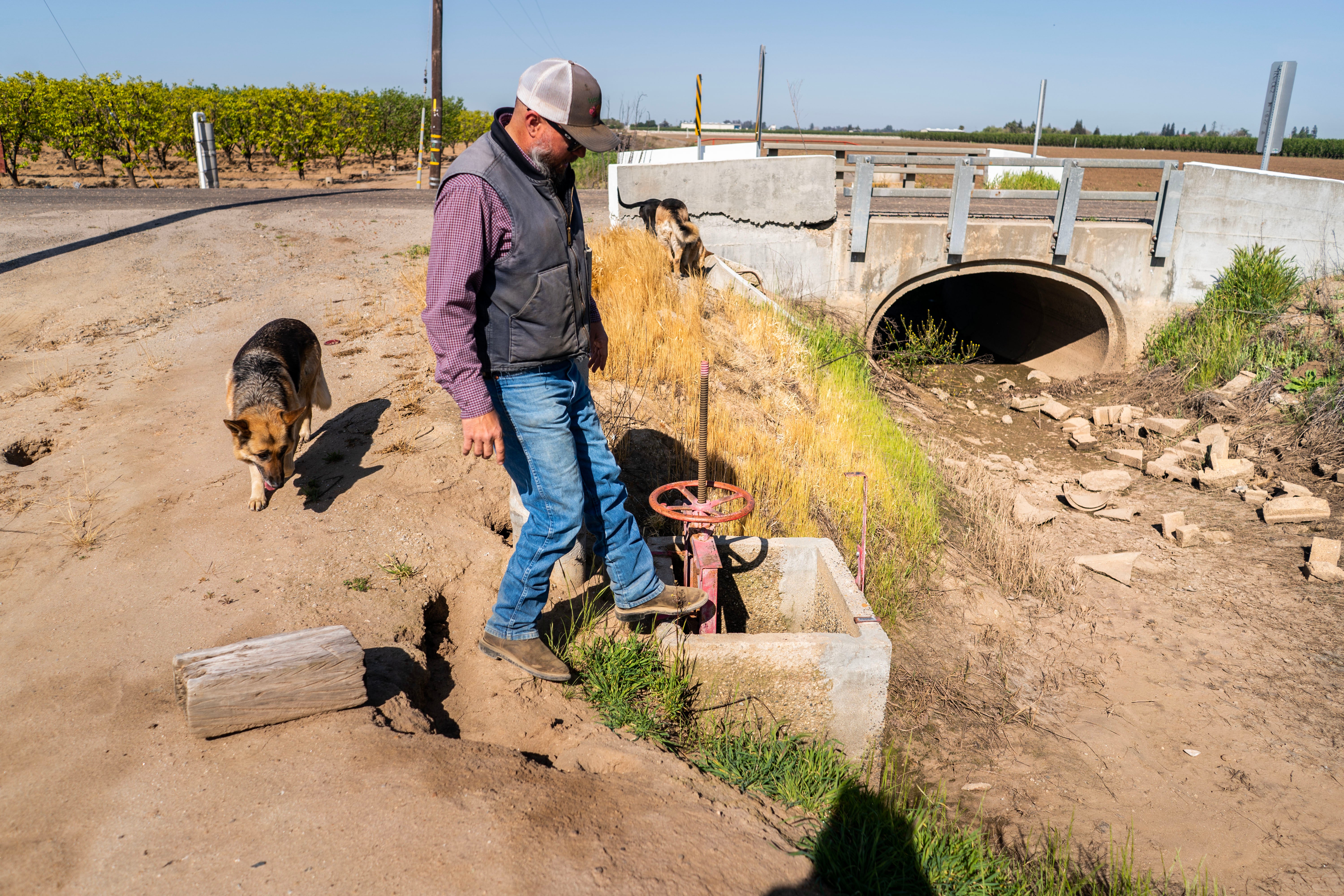
Noorigian and others wanted to know what measures their leaders had taken to prepare for the run-off, such as hiring workers to tend ditches, especially since the district recently upped its rates. Chad Wegley, the general manager, promised that they were on top of things. There are multimillion-dollar projects in the works. Waiting for federal and state emergency dollars can take time, and they’ve had trouble finding qualified people.
“There is an abundance of water, and it’s much harder to manage water when there is a limited supply of people,” Wegley said. “It’s been trial by fire.”
In response to a farmer’s question, he admitted they had not reached out to any contracting companies.
Wegley did not respond to multiple requests for comment.
Speaking to The Washington Post after the meeting, Noorigian and a few others express frustration about how the board leadership has been reactive during the drought years and has woefully mismanaged their “deteriorating system” compared with those in neighbouring districts.
These men, who belong to generational farming families, say they know the land and what happens when it floods. If the water runs into an “uncontrolled ditch, then our system is uncontrolled,” Noorigian explains. At the same time, they say the district is missing out on a huge opportunity to repair the overpumped ground by letting precious water rush towards already flooded communities farther downstream instead of funnelling it from the swollen river to store and put it back into the fields, orchards and ponds.
“We could be proactive and aggressive with recharging our aquifer,” Noorigian says. “Instead, we are doing nothing.”
© The Washington Post






Join our commenting forum
Join thought-provoking conversations, follow other Independent readers and see their replies
Comments